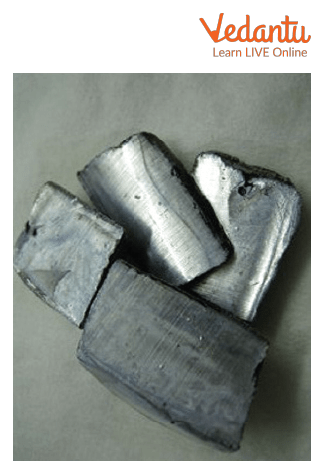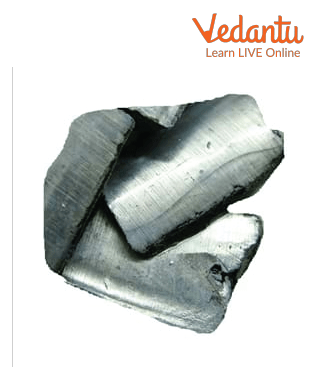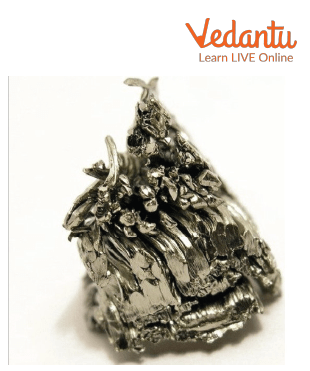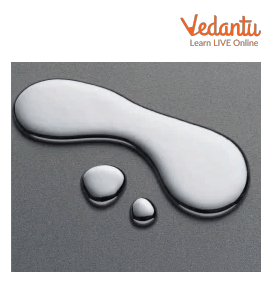




Interesting Facts About Metals and Nonmetals
Metals have existed for centuries, valued for their strength, durability, versatility, and electrical conductivity. The metal is used in industrial and architectural applications such as building construction, bridges, appliances, machinery, electronics, plumbing, HVAC, automobiles, aircraft, military equipment, and others using sheet metal and other forms. About 75% of all the elements in the periodic table are metals.
A total of 20 non-metals found in the earth normally exist in a solid or liquid or gaseous state at room temperature depending on the element. These are usually brittle and non-lustrous in the solid state.
Here, we will discuss the properties of metals and their facts. We have already told you some interesting facts related to metals as well as nonmetals. So, let's start with facts about metals and their general properties.
Interesting Facts About Alkali Metals
The group of elements lithium, sodium, potassium, rubidium, caesium, and francium in the periodic table are called alkali metals. This group is located in the s-block of the periodic table.
Alkali metals have similar properties. All of them are soft, shiny, and highly reactive at standard temperature and pressure and due to their softness can be easily cut with a knife.
Since they are quick to react, they should be stored in oil, etc. to prevent air and chemical reaction between them.
It is found naturally in salts as a non-free element. All the discovered alkali metals occur in nature in the order of their amounts, with sodium being the most common, followed by potassium, lithium, rubidium, caesium, and lastly, francium, the rarest due to its high radioactivity.
Physical Properties of Metals
The following are some of the well-known physical properties of metals.
Metals are good conductors of heat and electricity.
Metals are malleable and ductile.
Metals have a special kind of lustre.
Except for sodium and potassium, all metals have high melting and boiling points.
All metals except mercury are solid at room temperature.
Generally, all metals except sodium and potassium are quite hard.

Sodium.

Potassium.
All metals except potassium have high density.
Metals are resonant i.e. sound is produced when an object hits the metals.
Generally, all metals are brown or silver except copper and gold.
Facts About Rare Earth Metals
Rare earth elements are also called rare earth oxides, or lanthanides.
Yttrium and Scandium are usually included as rare earth metals.

Scandium
There are 17 sets of nearly indistinguishable shiny silvery white and soft heavy rare earth metals.
These metal elements and their compounds have no known biological function. Water-soluble compounds are mild to moderately toxic, but insoluble compounds are not.
Solved Questions
1. Which metals are not solid at room temperature?
Ans: Mercury is a liquid at room temperature.

Liquid Mercury
2. Write a few examples of metals.
Ans: Examples of metals are aluminium, copper, silver, gold, sodium, potassium, magnesium, etc.
3. Which metals do not have high melting and boiling points?
Ans: Sodium and potassium are metals that do not have high melting and boiling points.
Learning by Doing
Write True or False.
Metals are bad conductors of heat and electricity.
Metals are brittle.
Metals have a special kind of lustre.
Yttrium and Scandium are usually included as rare earth.
Summary
The group of elements lithium, sodium, potassium, rubidium, caesium, and francium in the periodic table are called alkali metals. This group is located in the s-block of the periodic table. Metals are good conductors of heat and electricity. Metals are malleable and ductile and have a special kind of lustre.
Generally, all metals are brown or silver except copper and gold. Rare earth elements are also called rare earth oxides, or lanthanides. Yttrium and Scandium are usually included as rare earth metals.
FAQs on Facts About Metals
1. What are the main physical properties that define a substance as a metal?
Most metals are defined by a distinct set of physical properties. The key characteristics include:
Lustre: They have a shiny surface.
Malleability: They can be beaten into thin sheets without breaking.
Ductility: They can be drawn into thin wires.
Conductivity: They are excellent conductors of both heat and electricity.
State: They are typically solid at room temperature, with mercury being a notable exception.
2. Which metal is a liquid at room temperature and what are its primary uses?
Mercury (Hg) is the only common metal that is liquid at room temperature. Due to its uniform expansion and contraction with temperature changes, it is traditionally used in thermometers and barometers. It is also used in fluorescent lighting and some electrical switches.
3. What are some interesting facts about the uses of common metals?
Metals have a wide range of important applications. For example:
Iron and Copper are widely used for making industrial machinery, tools, and household utensils.
Aluminium, being lightweight and corrosion-resistant, is essential in aircraft manufacturing and food packaging.
Lithium is the lightest metal and is a critical component in rechargeable batteries for phones and electric vehicles.
Zinc compounds, like zinc phosphide, are used as rodenticides.
4. Which metal is used to make car batteries?
The primary metal used in conventional car batteries is lead (Pb). Lead-acid batteries are valued for their ability to provide the high surge of current needed to start an engine and for their reliability and low cost.
5. What is the difference between a pure metal and an alloy?
A pure metal consists of a single metallic element from the periodic table, such as pure iron (Fe) or pure copper (Cu). An alloy is a mixture created by combining a metal with at least one other element (which can be another metal or a non-metal). This is done to enhance properties like strength, hardness, or resistance to corrosion. For example, steel is an alloy of iron and carbon, which is much stronger than pure iron.
6. Why is gold preferred for making jewellery over a common metal like iron?
Gold is preferred for jewellery for several key reasons related to its properties. It is highly unreactive, meaning it does not rust, tarnish, or corrode when exposed to air or moisture. It is also extremely malleable and ductile, allowing it to be shaped into intricate designs. In contrast, iron rusts quickly and lacks the brilliant, lasting lustre of gold.
7. Are all metals magnetic? Explain with examples.
No, not all metals are magnetic. This is a common misconception. Only a few metals exhibit strong magnetic properties, a phenomenon known as ferromagnetism. The most common examples are iron, nickel, and cobalt. Most other metals, such as aluminium, copper, gold, and silver, are not magnetic and will not be attracted to a standard magnet.
8. What makes some metals, like those in Group 1, highly reactive?
The high reactivity of metals like lithium, sodium, and potassium (Group 1 alkali metals) is due to their atomic structure. Each of these metals has only one valence electron in its outermost electron shell. They can achieve a stable electron configuration by easily losing this single electron. This tendency to readily give up an electron is what makes them so chemically reactive, especially with non-metals like chlorine or oxygen.









